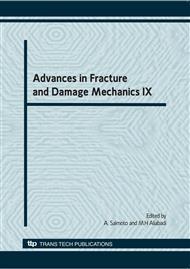p.173
p.177
p.181
p.185
p.189
p.193
p.197
p.201
p.205
Evaluation on Debonding along the Interface of Reinforced Concrete at Elevated Temperature
Abstract:
Steel and concrete are poured together with a certain way which can be regarded as a fiber reinforced composite material. For this composite material, the issues of bond and pull-out are very important. The bond property of reinforced concrete at normal temperature is different from the property at elevated temperature. The exposure of reinforced concrete structural elements to high temperatures during an aggressive fire leads to significant losses in its structural capacity due to the reduction in the strength of the concrete, possible plastic deformation of embedded steel and most importantly loss of bond between reinforcing steel and concrete. This paper aims to investigate the influence of high temperature to the bond slip of reinforced concrete. The bond behavior between reinforced concrete and reinforcing steel bars was evaluated under elevated temperatures. Based on the energy principle, the debonding criterion of the steel bars and concrete at a high temperature is derived. It was concluded that the bond slip should be included in order to reflect the unloading of the concrete surrounding the reinforcing steel exposed to fire temperature.
Info:
Periodical:
Pages:
189-192
Citation:
Online since:
November 2010
Authors:
Keywords:
Price:
Сopyright:
© 2011 Trans Tech Publications Ltd. All Rights Reserved
Share:
Citation:


